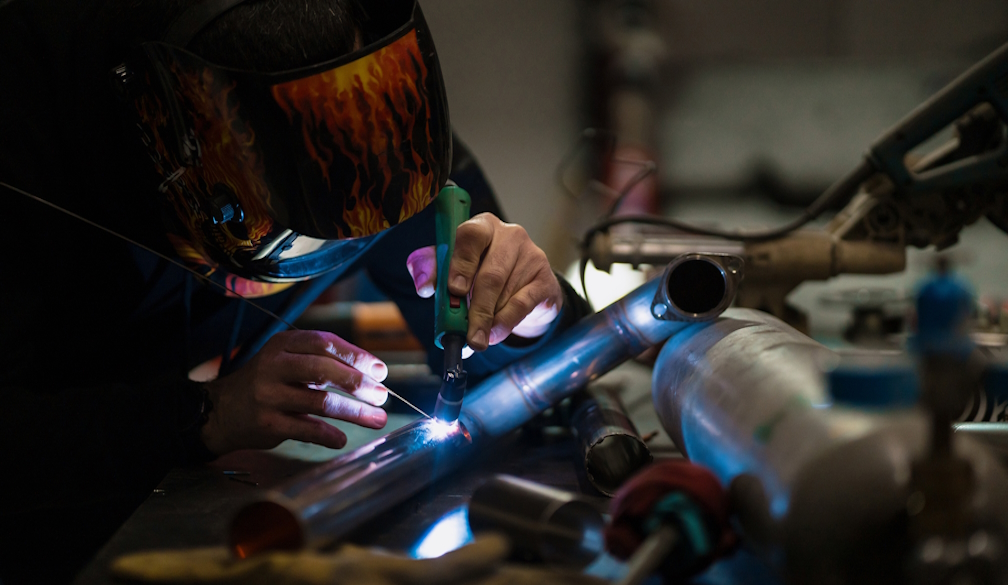Essential Maintenance Tips to Keep Your Laser Welder Running Longer

Introduction
Even the most advanced laser welder will lose precision if you don’t give it consistent care. Dust on lenses, tired coolant, or a kinked fiber cable can quietly degrade your beam quality—until a small issue becomes a costly repair. Proactive maintenance protects weld quality, reduces unplanned downtime, and extends equipment life. In this guide, you’ll get a practical schedule (daily/weekly/monthly/annual), a troubleshooting playbook, and a concise checklist you can put to work today.
Key Components and Why They Matter
Laser source & beam delivery
Your laser source generates the high-energy beam; any degradation, contamination, or misalignment shows up immediately in weld consistency. The beam then travels through a fiber delivery cable and focusing optics. Nicks, bends, or contamination in this path reduce power at the workpiece and cause instability.
What to watch:
- Stable output at set power
- Clean, undamaged fiber cable (no tight bends; no crushed sections)
- Secure, dust-free connectors
Optical system (lenses, mirrors, protective windows)
Optics do the precision work. Dirty protective windows or lenses reduce intensity, shift focus, and can cause hot spots that burn coatings. Regular inspection and correct cleaning technique (lint-free swabs, approved solvents) are non-negotiable.
What to watch:
- Spatter film, fingerprints, haze, or discoloration
- Chips or scratches on lenses/windows
- Proper seating and torque on optics mounts
Cooling system
Cooling protects your laser source, head, and electronics from heat stress. Whether your unit is air-cooled or water-cooled, clogged filters, low coolant, or fouled heat-exchangers will raise internal temps and shorten component life.
What to watch:
- Correct coolant level and concentration (for water-cooled)
- Clean radiator fins and air filters (for air-cooled)
- No kinks, leaks, or pump cavitation noises
Gas & shielding system
Shielding gas (often argon or nitrogen) prevents oxidation and stabilizes the molten pool. Poor flow or leaks can show up as porosity, discoloration, or inconsistent bead shape.
What to watch:
- Verified flow rate and pressure at the nozzle
- Leak-free hoses and fittings
- Correct nozzle size and clean, undamaged tips
Electrical, control & safety systems
Stable power and reliable controls keep your parameters consistent. Safety interlocks and enclosures protect people in the work area—laser safety isn’t optional (see OSHA and IEC/ISO guidance linked below).
What to watch:
- Tight, undamaged connectors and cables
- UPS or line conditioning if voltage is unstable
- Functional interlocks, door switches, emergency stops
Maintenance Schedule: Daily, Weekly, Monthly & Annual Tasks
Use this cadence to build a maintenance routine that fits your production reality.
Daily Maintenance (Start-/End-of-Shift)
- Visual sweep: dust, debris, spatter buildup, loose fasteners
- Optics check: inspect protective window; clean with lint-free wipes and approved solvent; confirm no residue
- Cooling check: confirm coolant level/temperature (or airflow & fan operation on air-cooled units)
- Utilities: quick check of power cables, fiber strain relief, gas hose integrity, and flow at the nozzle
- Test bead: run a short weld coupon at standard settings; note any change in bead shape or color
Weekly / Monthly Maintenance
- Weekly: inspect fiber delivery for bends, scuffs, or compression points; clean or replace air filters; wipe fan grills and heat-sinks
- Monthly: verify alignment and focus (per your OEM procedure); check lens condition deeper in the head; validate gas regulators; update software/firmware after backing up parameters
Quarterly / Annual Maintenance
- Quarterly: replace worn consumables (nozzles, protective windows, O-rings); check chiller coolant quality and hose integrity
- Annual: full system diagnostics (power calibration, beam quality check), coolant change (if specified), optical train inspection by qualified technician, safety system verification
Common Issues, Causes & Preventive Actions
Laser power drop or unstable output
Likely causes: dirty optics, misalignment, damaged or stressed fiber cable
Fix/Prevention: clean optics methodically; verify focus and alignment; route fiber with proper bend radius and protection; log power tests to spot trends early
Overheating or cooling alarms
Likely causes: clogged filters, low coolant, fouled heat-exchanger, fan failure
Fix/Prevention: clean filters/fins; top up or replace coolant to OEM spec; confirm pumps/fans are running and quiet; keep ambient temps in range
Porosity, burn-through, or excessive spatter
Likely causes: contaminated optics/nozzle, poor gas shielding, wrong parameters or standoff
Fix/Prevention: clean and replace nozzles and protective windows; verify gas type/flow; re-check stand-off distance and travel speed; confirm material prep (oil/rust/oxide removal)
Fiber cable damage
Likely causes: tight coils, kinks, crushing under wheels, abrasion
Fix/Prevention: follow minimum bend radius; use cable hangers/protectors; inspect weekly; replace at first sign of core damage
Electrical/control faults
Likely causes: loose connectors, aged cables, line voltage dips or spikes
Fix/Prevention: re-seat and torque connectors; replace degraded cords; consider UPS/line conditioner in unstable grids; verify ground
Environment, Consumables & Operator Training
Operating environment
Keep your laser welder in a clean, dry, ventilated space. Excess dust, oil mist, and temperature swings accelerate wear, clog filters, and contaminate optics. Manage airflow around intakes and avoid blocking exhaust.
Consumables and quality parts
Cheap optics and nozzles become expensive: they haze faster, distort the beam, and force frequent rework. Use OEM-approved lenses, protective windows, nozzles, and gas fittings—and track their change intervals.
Operator training & maintenance logs
Well-trained operators catch “off” sounds, colors, and bead shapes before they become failures. Keep a maintenance log noting dates, findings, replaced parts, and power tests. Patterns in the log will help you predict issues and schedule service before a breakdown.
At-a-Glance Maintenance Checklist
|
Cadence |
Tasks |
|
Daily |
Visual sweep; clean protective window; confirm coolant/airflow; verify gas flow; inspect cables/hoses; run test bead |
|
Weekly |
Inspect fiber routing; clean/replace air filters; vacuum grills/heat-sinks; check nozzle wear |
|
Monthly |
Verify focus/alignment; deeper optics inspection; confirm regulators; back up & update software |
|
Quarterly |
Replace consumables (nozzles, windows, O-rings); inspect chiller/hoses; power trend check |
|
Annual |
Full diagnostics; coolant change (if required); safety interlock test; OEM/service visit |
Best practices: document everything, respect duty-cycle limits, keep spares on hand, and standardize cleaning supplies and methods.
Why Maintenance-Friendly Design Matters (and How Denaliweld Supports Longevity)
When the machine is designed for serviceability, your routine gets easier—and your uptime improves. Look for:
- Fast access to optics (tool-less protective window swaps)
- Efficient cooling paths with removable filters and clear airflow
- Robust fiber protection and sensible routing guides
- Clear dashboards/logs for temperature, power, and fault histories
If you’re evaluating or upgrading equipment, a well-supported platform makes a difference. The laser welder lineup and product ecosystem from Denaliweld emphasize practical maintenance features—like accessible optics, reliable cooling, and data logging—so you can keep weld quality high with less hassle over the machine’s lifetime.
Conclusion
Routine maintenance isn’t busywork—it’s your first line of defense against drift in quality, unexpected downtime, and shortened machine life. By following a structured program across optics, cooling, gas, power, and environment—and logging what you do—you’ll keep your laser welder running at spec, protect your team’s time, and preserve margins.
Use the schedule and checklist above to standardize care across shifts. The payoff shows up in cleaner beads, consistent penetration, fewer alarms, and longer intervals between major services. Small daily habits are what extend the life of your equipment—and keep your production promises.









